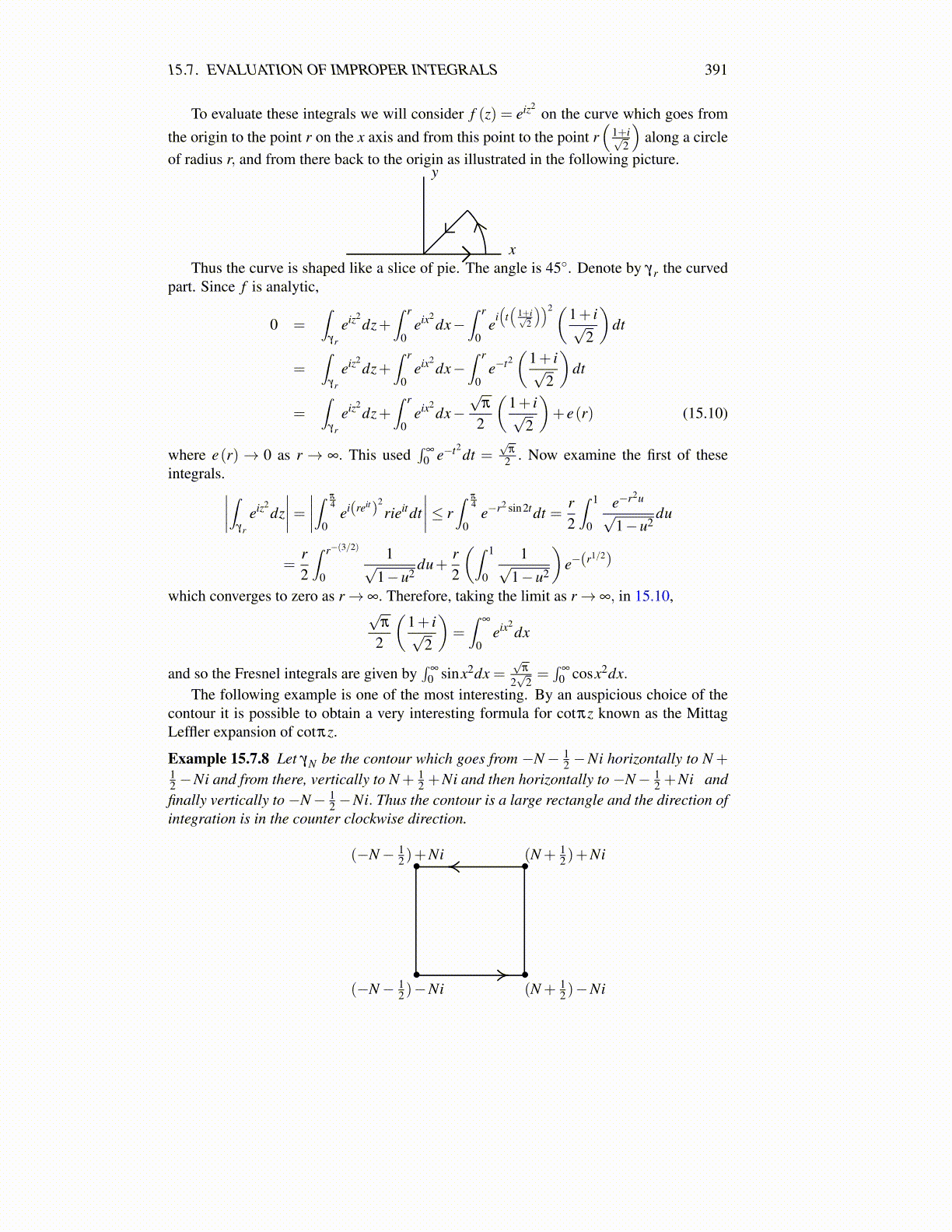
15.7. EVALUATION OF IMPROPER INTEGRALS 391
To evaluate these integrals we will consider f (z) = eiz2on the curve which goes from
the origin to the point r on the x axis and from this point to the point r(
1+i√2
)along a circle
of radius r, and from there back to the origin as illustrated in the following picture.
x
y
Thus the curve is shaped like a slice of pie. The angle is 45◦. Denote by γr the curvedpart. Since f is analytic,
0 =∫
γr
eiz2dz+
∫ r
0eix2
dx−∫ r
0ei(
t(
1+i√2
))2(1+ i√2
)dt
=∫
γr
eiz2dz+
∫ r
0eix2
dx−∫ r
0e−t2
(1+ i√
2
)dt
=∫
γr
eiz2dz+
∫ r
0eix2
dx−√
π
2
(1+ i√
2
)+ e(r) (15.10)
where e(r)→ 0 as r → ∞. This used∫
∞
0 e−t2dt =
√π
2 . Now examine the first of theseintegrals.∣∣∣∣∫
γr
eiz2dz∣∣∣∣= ∣∣∣∣∫ π
4
0ei(reit)
2rieitdt
∣∣∣∣≤ r∫ π
4
0e−r2 sin2tdt =
r2
∫ 1
0
e−r2u√
1−u2du
=r2
∫ r−(3/2)
0
1√1−u2
du+r2
(∫ 1
0
1√1−u2
)e−(r1/2)
which converges to zero as r→ ∞. Therefore, taking the limit as r→ ∞, in 15.10,√
π
2
(1+ i√
2
)=∫
∞
0eix2
dx
and so the Fresnel integrals are given by∫
∞
0 sinx2dx =√
π
2√
2=∫
∞
0 cosx2dx.The following example is one of the most interesting. By an auspicious choice of the
contour it is possible to obtain a very interesting formula for cotπz known as the MittagLeffler expansion of cotπz.
Example 15.7.8 Let γN be the contour which goes from −N− 12 −Ni horizontally to N +
12 −Ni and from there, vertically to N + 1
2 +Ni and then horizontally to −N− 12 +Ni and
finally vertically to −N− 12 −Ni. Thus the contour is a large rectangle and the direction of
integration is in the counter clockwise direction.
• •
••
(−N− 12 )−Ni (N + 1
2 )−Ni
(N + 12 )+Ni(−N− 1
2 )+Ni